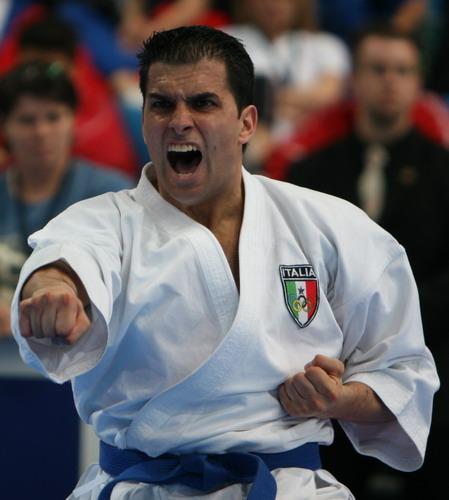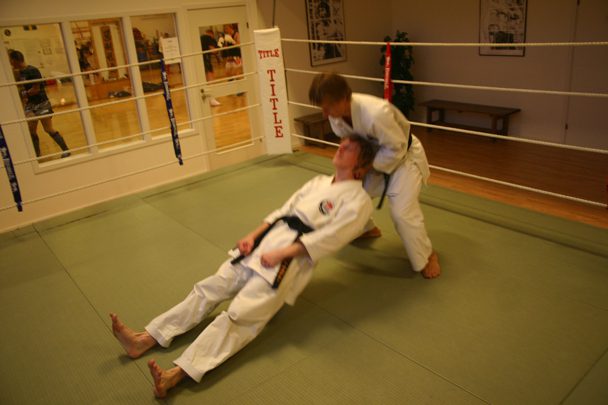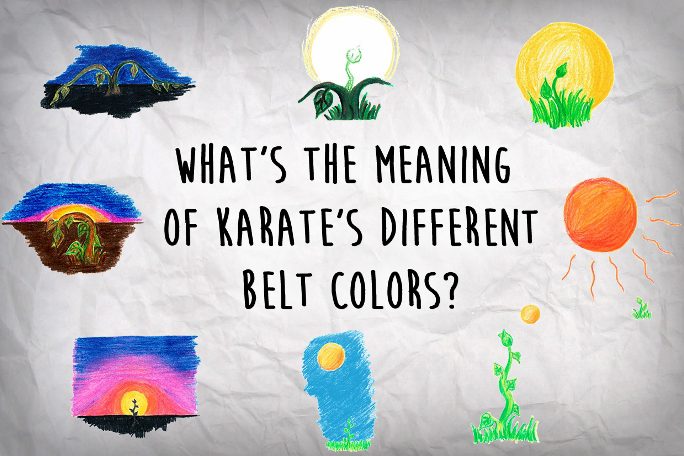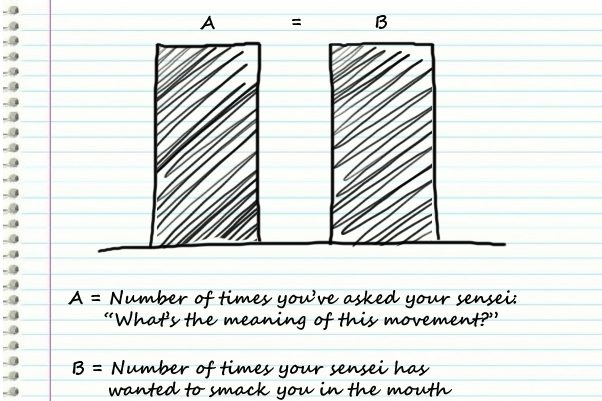“Noooo! Moooore kimochi!”
“Kimochi…”
“Kimochi!!!”
The word echoed in my head that night when I was trying to sleep. My sensei had been repeating the word over and over, the whole training, that evening, and I couldn’t understand why. What on earth did it mean?
“Kimochi” was all I could think of.
“Kimochi?” Isn’t that a Korean dish?!
As I lay in my bed, falling deeper into sleep, my mind started wandering – Is it possible that he (sensei) had been at a really awesome Korean restaurant the night before, and the food was so incredibly, mind-blowingly good that he spent the whole training screaming about it?
It’s possible.
Thinking about Korean food made me really hungry, so I flew up from bed, looked at the clock (only 1.30 AM), and headed to the refrigerator. That’s when I almost tripped over my “denshi jishou” – electronical dictionary.
Ping! Idea.
I picked up the dictionary and typed “kimochi”. After trying five times to hit the right keys in the pitch black room, I finally got a hit:
“Kimochi – Feelings; a state [frame] of mind; mood, spirits”
That’s it! Kimochi means feelings! Sensei wanted to see more feeling in our techniques.
Satisfied with finding the answer, I finally fell asleep…
KRAAAA!!! KRAAAA!!! A crazy Okinawan bird literally screaming outside my window woke me up the next day, and my first thought when I opened my eyes was: “How the hell do you show feeling with a physical technique?”. My second thought was “I’m going to kill that bird”, but let’s not go there now.
Kimochi – feeling – is apparently really important when training, but how do you train it, and how can you express it? Most people never even care about it! But on higher levels, “kimochi” is what separates the fake from the great.
Let me tell you how we train it here. For example, one exercise is this: Two people stand next to each other, and begin a kata (the same kata). They bow, announce (scream) the name of the kata, and then assume the “yoi” position.
That’s it. End of exercise.
Then the rest of the class votes for whoever had better “kimochi”, or feeling. Well, you can’t really know who had better feeling, you just have to vote for the one who looked like they had better feeling.
Sometimes it’s almost 50/50 in votes! Doesn’t that say a whole lot about what “kimochi” is?
It is subjective. There is no scale, no measurements, it is highly individual. We are not robots; we have different feelings. Somebody thinks person A showed really good spirit, while somebody thinks B had a stronger feeling.
But when somebody shows a really excellent, good and strong “kimochi”, everyone feels it. You can often tell by looking at your goose bumps.
So how do you develop this?
How do you make people watching you get goose bumps?
I have some ideas. First of all, a person who is confident in his/her technique will naturally show a stronger feeling and emotion for what they do. So, to begin with, get confident in your techniques. Confidence up = “kimochi” up.
If you doubt your skills, it will show. Like a small crack in your “kimochi”-wall.
Secondly, learn the meaning of what you are doing.
I have an analogy for you:
Imagine a woman is about to sing a really beautiful song, just for you. The music starts playing. “Okay, looking good” you think. Then the song starts. You can hear that the voice is really perfect. “This is going to be good!”
But wait a minute! You just got a strange feeling… Something is not right.
After listening to the whole song, you don’t feel satisfied. You just feel strange. It was a great song, but something was wrong, and you can’t tell what.
Let me tell you what it was: The singer didn’t understand a word of what she sang. She was in fact singing in another language. That’s why she couldn’t sing with the “right” feeling.
And that’s why you didn’t feel the song.
Can it be the same with Karate? I think so.
Imagine you are about to perform a kata, (or just some random techniques), but you don’t really know the purpose or meaning of the techniques (bunkai). How can you show the “right” feeling when you don’t know the meaning of what you are supposed to show?
You can’t.
Try singing a song in Chinese with the right feeling. I don’t think you are able to, unless you actually speak Chinese. You will probably emphasize the wrong words. You will have a low/high tone in the wrong places. You will have pauses in strange places.
You will simply have the “wrong” feeling.
Don’t believe me? Sing this:
“Chuang qian ming yue guang, Yi shi di shang shuang, Ju tou wang ming yue, Di tou si gu xiang.”
Just try, it’s fun.
I bet my sweaty Karate belt that a Chinese would laugh if you tried singing that. You have no idea how it’s supposed to be sung! In the same way, a majority of people have no idea how a kata is supposed to be done.
Okay, I’ll make it a little bit easier for you. Let’s say like this: You are allowed to train 20 years (!) at this song. Then you have to perform it in front of a bunch of Chinese people.
Chances are they will still laugh. And they will laugh even more when I tell them that you have been practicing this for 20 years!
20 years of training didn’t help you understand a single word. Not even a 100 years would.
Then what would?!
Well, you might need to learn the language! You would maybe want to speak to people who have sung if before, and ask for their help, and make them correct your mistakes. You might even have to travel to China. Then practice some more.
And eventually… you will have the right feeling.
That’s when people will get goose bumps from your song, even if they don’t understand a single word of Chinese.
Why?
Because they can see that you understand.
And that’s all that’s necessary.
—
PS. For those of you who are really curious, here is the song in English:
“Bright moonlight falls near my bed, like frost on the ground. I look up at the moon, then lower my eyes, and think of my home.”
Quite a sad song. I wonder how many sang it like “Happy Birthday”!



3 Comments